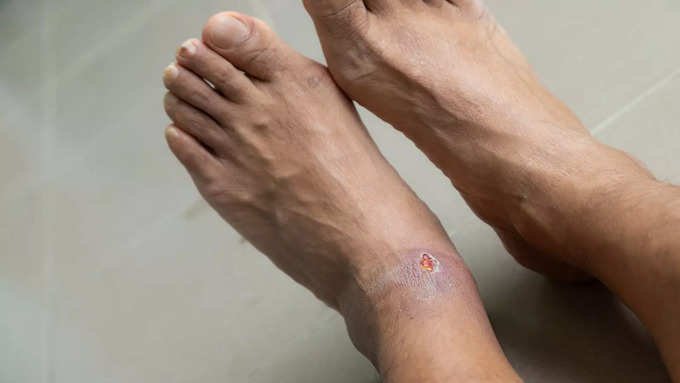Why do diabetics suffer from foot ulcers?

Foot ulcers are a common injury in people with diabetes. This condition occurs especially when the blood sugar level is not controlled. An open sore on the leg without a blister.
During diabetes Peripheral neuropathy Due to the nerve damage called leg pain cannot be felt. So blisters and cuts on the feet cannot be noticed. Diabetic feet are associated with reduced blood flow. This slows the rate of healing even if the injury is present. Even a small sore can take weeks or months to heal.
Why should feet be taken if feet are sore?

As an ulcer is an open sore, there is a high chance of infection. An infection that begins in an ulcer can travel to the bone via the bloodstream. An infection in the bone can pose a serious health risk. These can be life-threatening and may require amputation. Keeping this severity in mind, measures to prevent foot ulcers should be taken into account. Let’s see what can be done about it.
Keep blood sugar levels under control

Blood sugar levels should be monitored regularly. Always keep it in a healthy range. Because when the blood sugar level increases, the healing becomes more difficult. Blood sugar level should be checked at regular intervals.
Diabetics should control their excess weight

Carrying too much weight puts more stress on the feet. This can cause friction when wearing shoes. This can lead to scratches and blisters. Blood sugar levels can be difficult to manage when obese. Surgery can help you lose weight if you are overweight or obese.
What should be the shoes of diabetic patients?

Wearing ill-fitting shoes not only makes feet uncomfortable but also increases the risk of blisters. These can change over time if the shoes are too tight or too small for the feet or too big for the feet. So diabetics should also pay attention to the appropriate size of shoes they buy. Shoes should not have tight straps that can restrict blood flow to the feet. Dry socks should be worn looking clean. Avoid walking with bare feet.
Why is it necessary for diabetic patients to have a foot examination?

Diabetic patients Take care of your feet daily. Look for blisters, cuts, scrapes on the feet and legs, and cuts or scrapes on the toenails. If they are unable to observe, they can ask family members. Or you can check with a mirror. Even if the blisters are small, you should consult a doctor without delay.
Not just blisters. Redness, swelling and heat in the legs, but consulting a doctor without delay can prevent damage.









